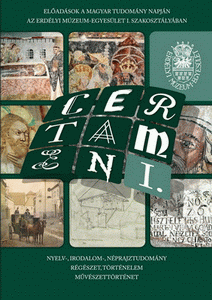A válaszúti Bánffy-kastély 19. századi berendezése
The Interior Decoration of the Bánffy Country House from Răscruci from the 19th Century
Author(s): Beáta BordásSubject(s): Cultural history
Published by: Erdélyi Múzeum-Egyesület
Keywords: baron Ádám Bánffy; building-history; Johann Peter Nepomuk Geiger; Juon Kimpián (Ioan Câmpean); István Lakatos; Leopold Kaff er; works of woodcarving; tile stove with embossments
Summary/Abstract: The country house from Răscruci (Cluj county) was erected by the Bánffy family and its historical importance is due to its ravishing interior decorations executed by baron Ádám Bánffy (1847–1887) himself. Miraculously, in the building are preserved the carved wood paneling and ceilings of the main hall and the dining room, just like the hand-made furniture from the dining room (made in the 1870’s), and a few tile stoves, all of them designed and made by the “handyman” baron and his helpers. The country house had several building phases, but the most important transformation was made by baron Ádám Bánffy in the years between 1875 and 1887. Due to our research in the Bánffy family’s archives, based mainly on inventories, the preceding building-phases can be now reconstructed more precisely. Our study presents a short architectural history of the country house, followed by a detailed presentation of baron Ádám Bánffy’s biography. The novelty of the study lies in the presentation of the furniture and tile stoves from the 19th century which are preserved in their original places. Among them, the great stove from the dining room deserved great attention due to its beautiful majolica embossments placed on its sides. We managed to find the models used by the baron for designing the embossments, the prints of a painter from Vienna, Johann Peter Nepomuk Geiger (1805–1880), depicting several Hungarian historical scenes, and we offer a detailed analysis of it.
Journal: Certamen
- Issue Year: 2013
- Issue No: I
- Page Range: 442-459
- Page Count: 18
- Language: Hungarian

